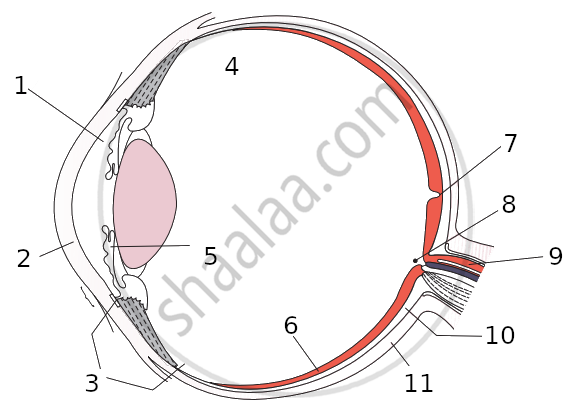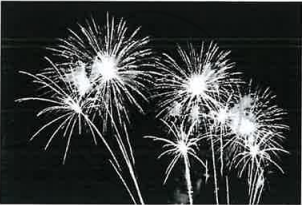Advertisements
Advertisements
Question
For the normal human eye, the near point is at ___________ cm.
Options
10
20
25
30
Solution
For the normal human eye, the near point is at 25 cm.
APPEARS IN
RELATED QUESTIONS
Match the following:
| Column I | Column II |
| (i) Myopia | (a) Converging power of eye lens becomes low |
| (ii) Hypermetropia | (b) Converging power of eye lens remains the same |
| (c) Converging power of eye lens becomes high |
Where is the image formed in a human eye?
State whether the following statement is true or false:
The image formed on our retina is upside-down
Define the term "power of accommodation" of human eye.
What changes take place in the shape of eye-lens:
when the eye is focused on a near object?
How does this affect the amount of light entering the eye?
There are two types of light-sensitive cells in the human eye:
To what is each type of cell sensitive?
List, in order, the parts of the eye through which light passes to reach the retina.
Describe the working of the human eye with the help of the above diagram.
Which of the following changes occur when you walk out of bright sunshine into a poorly lit room?
(a) the pupil becomes larger
(b) the lens becomes thicker
(c) the ciliary muscle relaxes
(d) the pupil becomes smaller
Fill in the following blank with suitable word:
Having two eyes enables us to judge.................more accurately.
What are the advantages of having two eyes instead of just one?
The animal which does not have eyes that look sideways is:
(a) Horse
(b) Chicken
(c) Lion
(d) Fish
Having two eyes gives a person:
(a) deeper field of view
(b) coloured field of view
(c) rear field of view
(d) wider field of view
Name the following:
The photoreceptors found in the retina of the eye.
Differentiate between members of the following pair with reference to what is asked in bracket.
Rod and cone cells (pigment contained)
Mention if the following statement is true (T) or false (F) Give reason.
yellow spot of the retina is the region of colour vision
With reference to the functioning of the eye, answer the question that follow:
Name the cells of the retina and its respective pigments which get activated in the dark.
Name the following:
Short sightedness.
Name the respective organs in which the following are located and mention the main function of each:
(i) Iris
(ii) Semicircular canals
Choose the correct answer.
Rods are receptor of ______________
Choose the correct answer.
Which one is the photoreceptor _____________
Choose the correct answer.
Aperture controlling passage to light into the eye is ___________
Differentiate between:
Vitreous humour and Aqueous humour.
Name the following:
The most sensitive region of the retina.
Give Technical Term:
The nutritive layer of the eye which also presents reflection of light.
Choose the Odd One Out:
Complete the following sentence with appropriate Word
The part of the human eye where rod cells and cone cells are located is the:
Write the name.
The part of human eye that transmits electrical signals to the brain.
Name the capacity of the eye lens to change its focal length as per need.
Which one of the following statements is NOT correct?
Select the option with incorrect identification:

Match the following:
| Column - I | Column - II |
| 1. Retina | a. Path way of light |
| 2. Pupil | b. Far point comes closer |
| 3. Ciliary muscles | c. near point moves away |
| 4. Myopia | d. Screen of the eye |
| 5. Hypermetropia | e. Power of accommodation |
Assertion (A): Rods and Cones are photoreceptors in the sclera of eyeball.
Reason (R): Rods are sensitive to dim light.
Chris was watching the display of fireworks in the sky.

- Trace the path of the light rays using the following terms:
Fovea, Lens, Conjunctiva, Pupil, Cornea. - Name the nerve that carries the impulse for vision to the brain.
Which of the following is responsible for the adjustment of the size of pupil?
Name the following:
Three layers of the eye ball.
